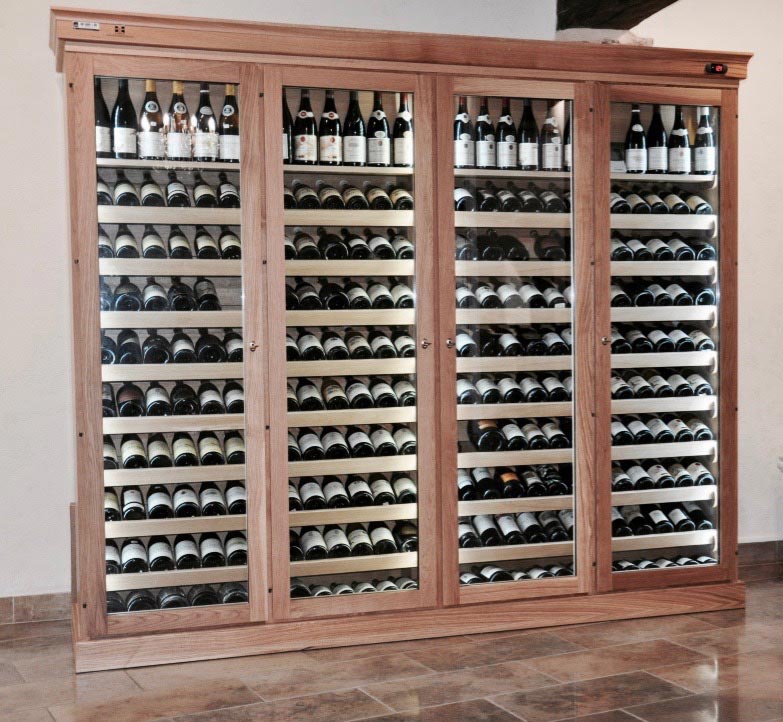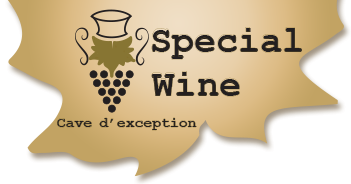No products
Conservation and advice
Our conditions of conservation
We have chosen to offer you the best deal, so Special Wine must guarantee its customers the best service adapted to the quality of products on sale. All our wines are sleeping in conservation cellars insuring the precautions necessary to guard an exceptional wine are in place.
The cellar in natural oak ELLEMME Classic brand, designed and handcrafted in Italy, incorporates the most innovative advanced technologies to keep wines (humidification, filtering UV, cold regulation). Its exterior is comprised of insulating timber, which allows the inside of the cellar to maintain the best temperature and humidity level.

To ensure a pleasure meet your expectations during your tasting of exceptional wine, you should take care of your bottle. It has the intrinsic qualities of a great wine, but it needs your attention in order to improve and be enhanced.
You should follow any step and respect certain golden rules to avoid disappointment :
The best conservation
It is absolutely essential to preserve older vintages, in dark conditions, best temperature (12° seems ideal) and good humidity (at least 60% humidity) optimal. However, excess moisture can cause peeling of labels but is not, contrary to the visual impression, harmful to wines : do not the mistake of sacrificing a bottle whose label is damaged or missing... Conversely, if there is a lack of sufficient moisture the corks dry and wine could evaporate.
Travelling upright
After an online order, choose the Chronopost delivery for all prestige bottles to minimize transport time.
Corks of very old bottles naturally lose their elasticity over time, so they can be vulnerable during transport. So it is better that they are traveling up so that the wine does not hit against the corks : when the bottle is lying, the wine movement can have an effect called "hammer".
Some rest before the tasting of old bottles
Following the purchase of an old vintage it is better to let it sit in your cellar a few days to let the agitation from the transport settle ; do not drink the first day of your Petrus 1945, he will punish you for this insult !
The more wine is aged, the more fragile it is : it must be viewed carefully upright in the cellar (at least one day in advance) or serve in a pouring basket because of the deposit inherent in many old vintages.
Wipe dust from collar to avoid seeing the dust falling into the glasses and uncork gently... When uncorking a wine, the metal part of the corkscrew should never come into contact with the liquid under pain of altering its flavours.
Decant or carafe
Decanting or carafing are rather recommended for all young wines even for white wines. Conversely, it is not advisable to decant or carafe older vintages that are fragile and very sensitive to oxidation ; rare vintages need calm and serenity in order to offer you the best conditions. It is therefore advisable to open old vintages a few minutes before drinking them and avoid leaving the bottle half full ; old vintages survive only very rarely several days after opening ; for some extreme cases, the lifetime is a few minutes after opening. That is why the violent oxygenation due to decanting will often be fatal for old wines. While most wines can be served directly from the bottle, some of them should be previously carafed or decanted.
To carafe is to serve a wine carafe quickly in order to be oxygenated and it delivers faster aromas. The carafing is generally recommended for young red wines, it allows them to deliver their flavours faster without reaching the taste complexity of long aging in the cellar. A carafed wine will become softer and rounder.
In addition, decanting will filter the deposit. We usually decant red wines that have a deposit ; the objective of this operation, which requires training, is to retain it in the bottle when carafe passage.
White wines can also be carafed including sweet that can gain power and aromatic richness. It is absolutely not necessary for Champagne. In general, it is better to avoid too long carafe, it risks losing the vitality and character of the wine.
Wine service order : the golden rule
The wine service order, meanwhile, is governed by one law : the wine we drink should never conflict with that which was used previously ; thus, the younger before the older, lighter ahead of the finest.
A correct temperature to taste your wines
There is a golden rule still applies for the wine service temperature : most prestigious wine is, the more it can withstand high temperature of tasting, and this, whatever the region or source/name.
To put the wine at the right temperature, you must take into account that the wine warms up a few degrees (about 2°) inside the glass. A young wine will bear one or two degrees less than a wine at its peak. It should be an exception for tannic and powerful reds which suffer when service is too cold. In fact, the cold tends to harden the tannins, bring out the bitterness, while the hot mitigates aromas and highlights alcohol.
Great red wine : 18°
Great young red wine : 16°
Great white wine : 14°
Light red wine / young : 13°
Rosé wine : 10°
Dry white wine : 10°
Non-vintage champagne : 8°
Vintage champagne : 10°
Old vintage champagne : 12°
Sweet : from 8° to 12° (according to the complexity)
Choice of glass
Regarding the glasses to use, they are naturally different for each wine ; in general, they must have a curved inside edge worm (known as a "closed tulip"), in order to direct the wine's aromas to the nose. In addition, you should never fill more than a third of the glass Also note that you can use a larger glass in order to release the aromas of a young wine. However, for older vintages, it is advised to use a slightly smaller glass to prevent rapid evaporation. For the Champagne a flute is recommended, although in recent years the biggest glasses, always in form of a "closed tulip", give outstanding results ; the legendary cup is, however, not appropriate as it diffuses too quickly the aromas.
Glasses (Spiegelau / Riedel) should always be held by the foot in order not to warm up the wine too quickly.
Finally, as we know in crystal (organoleptic neutrality, finesse and clarity), should be rinsed with clear water and wipe with a cloth ; you need the glasses and decanters, are spotlessly clean.
Prevent oxidation
After opening the bottle, we must quickly remove the bad air for wine that should not breathe too long may oxidize ; unprotected premature aging appears after a few hours. It is therefore necessary, with the aid of a vacuum pump and a special stopper, aspirate the air in the bottle.
Never reseal a bottle with the "dry" side of the cork to avoid the risk of contamination of the wine, if possible use a modern pump system.
Remember that the more of the bottle that is used, the greater the chance to oxidize and less wine will keep for a long time.
